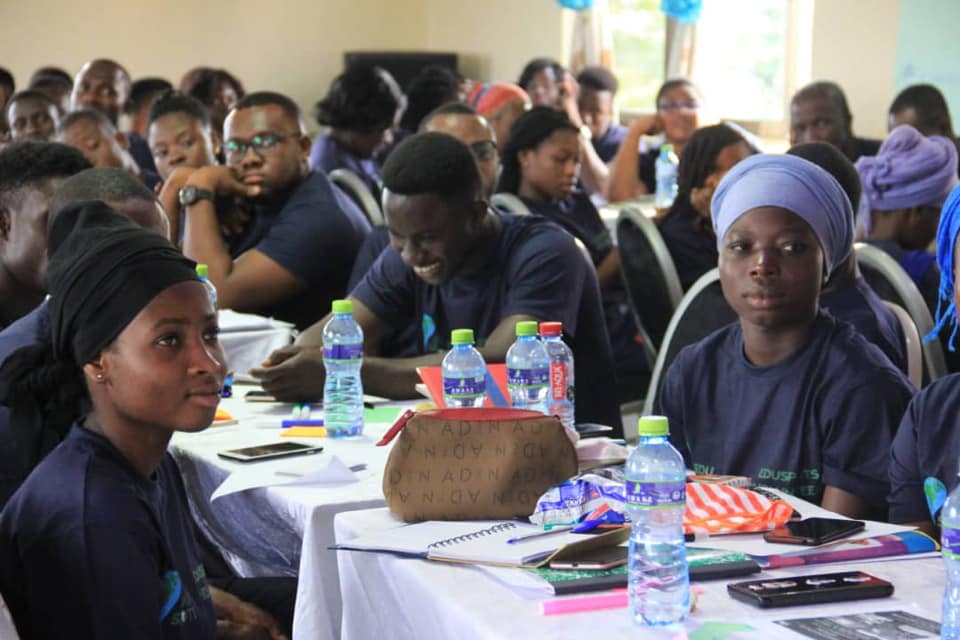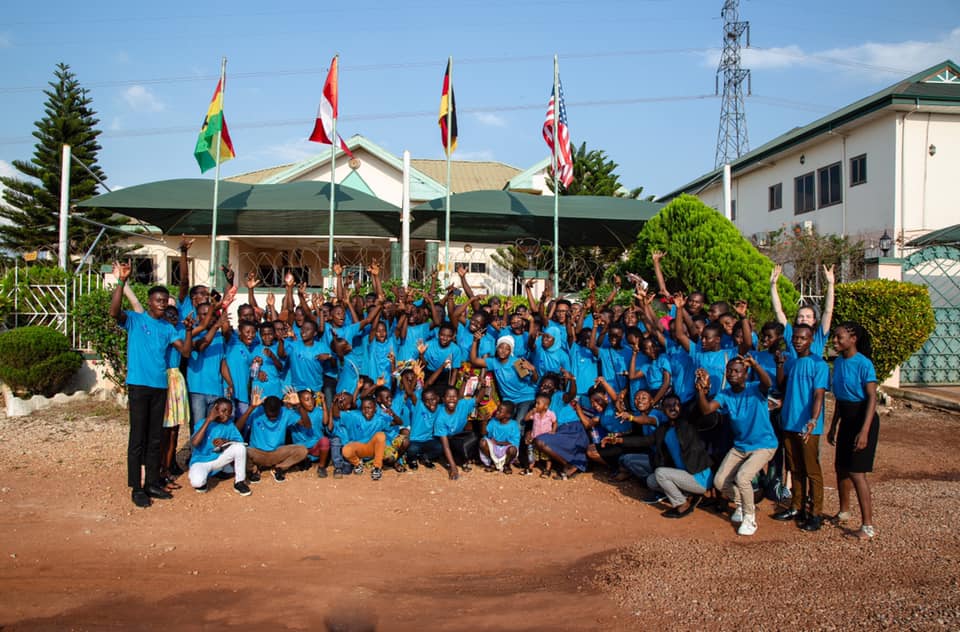“Being in the network built inspiration, enthusiasm, and resilience.” (Joshua, EduSpots volunteer)
Before the EduSpots network came to life, I had never reflected on the power of networks for enabling like-minded people to sustain their actions with greater enthusiasm, creativity and self-conviction. Certainly, my own motivation has been consistently ignited by the courage, creativity and passion for educational equity that I have witnessed on a daily basis on our EduSpot WhatsApp feeds, and through meetings in person.
What do we mean by a ‘network’? I think when we talk of a ‘network’ in the field of social change, we usually mean a group of people with similar interests who have been brought together in a way that enables them to move towards their individual goals, through the creation of a sense of collective purpose and ambition. They also allow for the sharing of mutually relevant information, and enable people to feel less isolated, given that they are now positioned within a wider system.
The EduSpots network grew organically, and sparked from a recognition of shared aims and purpose. In 2016, we had supported community members in creating 5 physical ‘spots’ in Abofour, Akumadan, Tamale, Elmina, and Asemkow. This was at a point where the ‘EduSpots’ (then “Reading Spots”) concept existed, but the ‘network’ between people did not. We were getting updates from different communities individually via WhatsApp, until we realised that it would be more impactful if volunteers shared updates and ideas collectively between all the communities.
Since 2016, our network has grown to an estimated 300 volunteers (with 110 on our main WhatsApp feed, and many further feeds existing within communities), working in 40 different communities, spread across most regions in Ghana. I believe our network holds particularly unique strength because it is built from volunteers: it is not a network of people paid to achieve certain goals, but a group filled with people who have decided to dedicate their lives to advancing the educational opportunities of others, of their own accord. All we do is support them on a journey that they have already started, connecting them with others on a similar path, but positioned in different practical realities.
Ali Eliasu (once a volunteer, now our Head of STEM and Sustainability) commented:
‘We get to know that beyond our communities there are realities which are not exactly as ours, so we are able to empathise and instil that kind of empathy within our classrooms.”

Our network is straddled across the UK and Ghana, enabling international collaboration and deepening understanding, as well as reaching across 40 communities in Ghana. Our online courses have also been created with the purpose of enabling pupils, teachers, and community members from different contexts to read various stimuli and then explain how it relates to their own context, enabling others to appreciate the local relevance of different theories of development and social change to particular communities.

These are a few tips of our tips for growing an effective network:
1. An accessible platform
It is really important to identify a platform that works best for people to share ideas. This will greatly depend upon the region you work in, and the people within your network. Online options include: Facebook, WhatsApp, zoom (for video), email group threads, Twitter (perhaps using hashtags?) – I’d love to hear of other platforms that work (please comment below). We find WhatsApp works really well as it doesn’t take too much data to use, and allows people to contribute when it suits them, which is important given that our volunteers all have different working hours.
2. Meeting in person
People are more confident in sharing ideas and commenting on each others’ posts, when they had also met in person. This can present a great practical and financial challenge, especially in a volunteer network stretching across a large geographical area. However, we recognised the importance of bringing our community together, and have organised annual conferences that enable representatives from each community to travel to a central location. The conferences mainly consist of volunteers sharing their own ideas, with a few external speakers – where there were external speakers, we asked them to partly engage the volunteers in group work. We mix people up for the tasks, rather than enabling them to sit with people from their own community or region.

3. Structure
It is important to ensure that the feed has some sort of structure and boundaries. People need to be very clear on what the purpose of the platform is, otherwise you might find it constantly being hijacked for people’s individual interests, or people having exclusive conversations. We find that doing this gently is the best way – praising and thanking people for their contributions, but making them aware when the content they’ve shared is inappropriate. Having structured activities on the feed on a regular basis can work. We’ve trialled having a ‘Community of the Week’, where community volunteers take it in turn to lead a discussion and share updates.
However, it is also important to give the network a break at points, and not to bombard them beyond their interests – be careful not to ‘overflood’ a WhatsApp feed, and be aware that some ideas might just not take off (this may just be due to timing, and not due to the idea in itself not being worthwhile). Do not be disheartened, just listen to the network and adapt your approach. We try to encourage volunteers to feel confident to lead discussions that interest them, rather than everything coming from the admins, but this can be difficult.
4. Making it personal
Linked to this, for a network to work (whether one in reality or online, or both), I think it is important for people to feel known by others, and feel that they know others. As mentioned, meeting in person is really important to this but think as a network leader, your role is vital in creating a sense of the importance of the individual online. I try to ensure that I know every volunteer and their community and ask the rest of the management team to also build relationships with the network. It is useful to reference people in discussion (online or in real life exercises and presentations) and use different methods to bring a range of people in.
You will need to try out a range of activities in any network to bring people together, as it is difficult to encourage discussion organically. Alongside activities at conferences, we’ve led various activities and competitions on WhatsApp, including: New Year’s Quiz’s (ongoing as I write), Christmas card designing competitions, ‘Education initiative of the year’, online trainings, nurturing environmental action, and asking people to share particular challenges in their different communities.
5. Celebrating diversity
Indeed, it is vital to celebrate and welcome a range of people from different backgrounds and communities into a network, as this can make the content and exploration much richer. In our case, this sometimes means that people share posts with varying knowledge of teaching practice or confidence in English, but we ensure that we praise every volunteer for their activity, finding the strength in it, before opening the floor to others to give them ideas to advance what they are doing.
We also love having a range of ages in our project, too, although it is also important to engage some age groups separately at times – our first youth summit (see below) allowed us to focus on topics that interested the younger members of our community, and focus on their ability to contribute as young people.
Celebrating achievement and action is also energising – but be careful of giving out too many awards – there is a fine line between recognition and over recognition. We want to make sure that people are acting because they believe in the change they are creating, not because they expect acknowledgement. Every year we hold an awards ceremony at the end of our annual conference, mainly as a way of showcasing best practice and recognising those people who have consistently given their energy to the whole group. Our awards include ‘Spot of the Year’, ‘Newcomer Spot of the Year’, ‘Volunteer of the Year’, and ‘Education Initiative of the Year’.
6. Bring in new active participants
We’ve found that adding new participants with confidence and enthusiasm can reignite a network when it has become a little quiet or stagnant. We have often achieved this through our youth and teacher changemaker programmes, which enable pupils, teachers and community catalysts to join our network through an application process which involves taking the only course. We’ve found that this allows us to bring new people into the network on a bi-annual basis, and emphasise at interview that one of the central requirements of being a ‘changemaker’ is to regularly spark discussion and creativity on the WhatsApp platform, and to speak at conferences.

7. Don’t grow too quickly
Finally, I’d encourage you to avoid growing the network too quickly – as the quicker you grew, the harder it is for people to be known and feel known, as mentioned above. Quality of engagement is definitely better to focus on than ‘numbers in network’. More widely, in an organisation, I’d avoid chasing numbers of buildings, volunteers, etc, and instead really look at the quality of engagement, and the depth of impact in the community that this engagement is leading to.
Would love to hear any thoughts you have, on how we can move our work on further, and hear from leaders and participants in other educational networks out there!

Please do share any other points you have in the comments section below!
Cat Davison 01/01/2020



